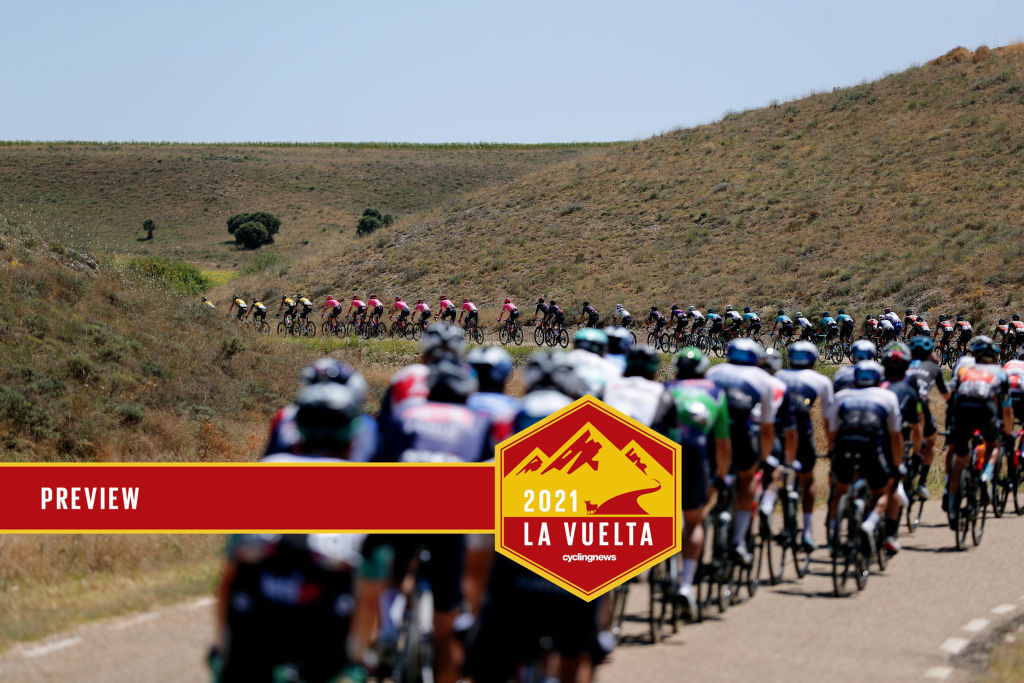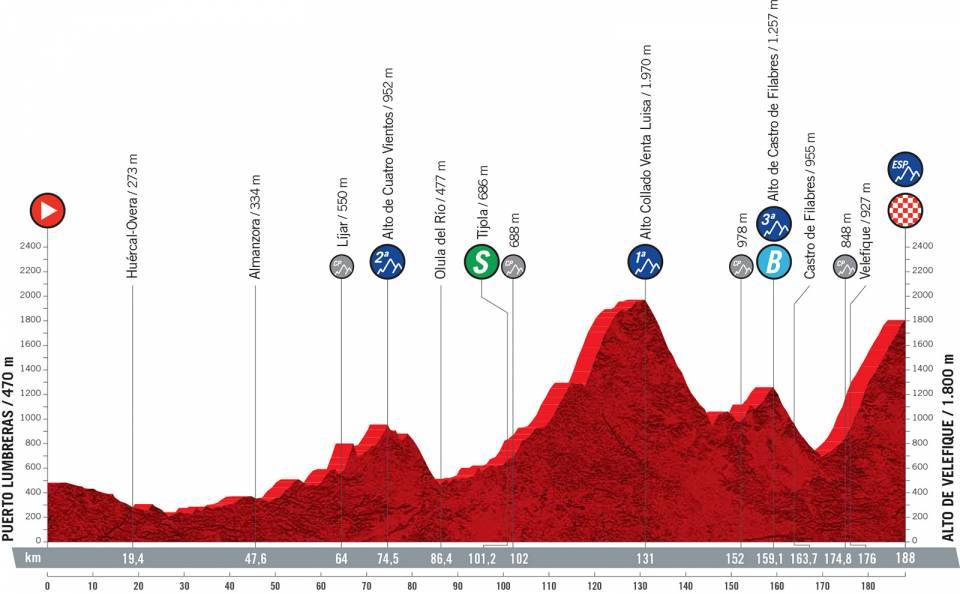Heat, dust and altitude at Vuelta a España hits the heights in Andalusia - Preview
Southern Spanish sierras shoot-out to test GC favourites on stage 9

Less than half an hour’s drive away from the Vuelta a España’s summit finish of Velefique on Sunday, fans of Clint Eastwood’s spaghetti western movies can still visit the original film sets, complete with stagecoaches, wigwams and bullet-riddled saloons. But if paying homage to Eastwood’s cowboys and gunslingers doesn’t appeal, don’t worry: on Sunday the chances of a two-wheeled GC shoot-out in the Vuelta a España are also extremely high.
Stage 9 features the two highest mountains of the entire race, for one thing. There’s the Alto de Collado Venta Luisa at 1,970 metres above sea level, two thirds of the way through the 188 kilometre stage, and then the Velefique summit finish, a fraction lower at 1,800 metres and the first hors categorie finish of the 2021 Vuelta.
Both climbs are located deep in the Almeria desert, in the remote Sierra de Filabres, which apart from making for spectacularly arid, stony backdrops of the day’s racing (hence the area being used for Eastwood’s westerns), adds a whole extra layer of difficulty to Sunday’s stage.
The heat of eastern Spain in the height of summer is hard enough to face on the coast, as riders like Egan Bernal (Ineos Grenadiers) already commented about the stage to Manga del Mar Menor on Saturday. But further inland, with temperatures set to soar to 33C degrees, on the deeper mountain valleys the stage could end up feeling like a ride through an airless furnace.
The other challenge the riders will find impossible to avoid on Sunday are the climbs itself. On paper, stage 9 of the Vuelta a España is one of the two hardest days of the race this year, together with stage 18 to the Gaimoniteiru in northern Spain. Like stage 18, stage 9 has more than 4,500 metres of vertical climbing, 1,000 metres more than any other day in the mountains.
What is most daunting about Sunday though, are the climbs’ sheer length, on a par with many of the more famous Alpine or Pyrenean cols. The Alto Collado Venta Luisa, a first-category climb that represents the first serious challenge of the day, is the longest of the entire Vuelta, at a staggering 29 kilometres. Although an average gradient of 4.4 per cent does not sound too challenging, there is a middle section lasting five kilometres of around 10 per cent and a vertical height gain of 1,300 metres, which could see some major splits in the bunch and perhaps a long-distance GC attack.

For fans with long memories, the last 90 kilometres of the stage are an almost exact carbon copy of the 2009 Vuelta, the last time there was a finish at Velefique. Barring the last couple of kilometres, the Alto de Collado Venta Luisa is identical to the northern ascent to Calar Alto, the astronomical observatory at its summit. Then after a fast, winding descent, the third-category Alto de Castro Filabres was what the riders faced back in 2009.
Get The Leadout Newsletter
The latest race content, interviews, features, reviews and expert buying guides, direct to your inbox!
Then, just as 12 years ago, the final climb of the day is the Velefique. British Tour de France winner Bradley Wiggins once compared the landscape of eastern Andalucia to Oman, and with its dried up riverbeds, vast mountain chains and moonscape-like terrain, there are definite similarities.
What reinforces that impression on Sunday is how similar the Velefique is to the Jebel Akhdar (Green Mountain), the most emblematic climb of the Tour of Oman. Although the Jebel Akhdar is only six kilometres long compared to the Velefique’s 14 kiloemetres, both are at the head of a long, empty mountain valley and both have similarly steady, but not excessively steep gradients and fairly broad, well-tarmacked roads.
What links the two the most strongly, though, is the way both climbs have a seemingly interminable series of hairpins leading to the summit. In the Velefique’s case, there are 14 hairpins in the last four kilometres alone. And as on the Jebel Akhdar, the exposed, empty landscape of the Velefique makes it easy to spot the different groups of riders scattered across the climb.
The Vuelta has been over the Velefique more recently than 2009, en route to the Calar Alto summit finish in 2017, with the victory going to current contender Miguel Angel López. Back in 2009, though, it concluded one of the hardest ever Vuelta stages, with more than 6,500 metres of vertical climbing.
While Ryder Hesjedal took a breakthrough victory over fellow-breakaway David Garcia Dapena, and 16 riders finished at less than a minute, the strong headwind actually helped keep the race together. But even so, the peloton had shattered to pieces by that stage, with the first 50 riders all finishing in clumps of half a dozen at most. And this Sunday could prove equally arduous - or more so.
Alasdair Fotheringham has been reporting on cycling since 1991. He has covered every Tour de France since 1992 bar one, as well as numerous other bike races of all shapes and sizes, ranging from the Olympic Games in 2008 to the now sadly defunct Subida a Urkiola hill climb in Spain. As well as working for Cyclingnews, he has also written for The Independent, The Guardian, ProCycling, The Express and Reuters.
